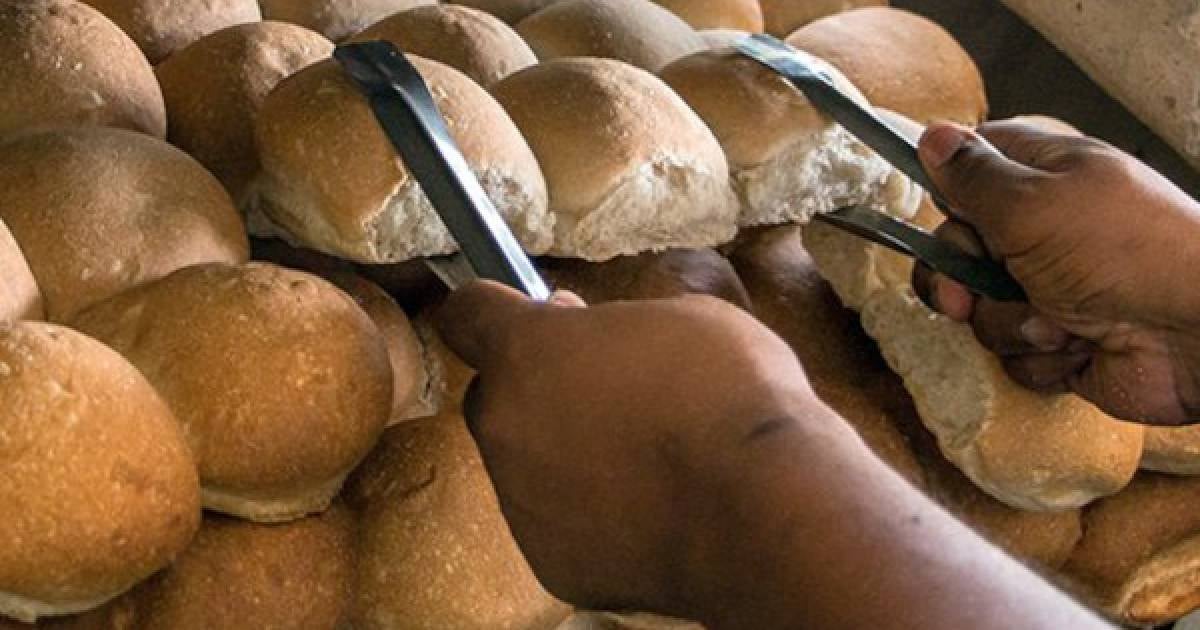The regular availability of rationed bread, a staple in the Cuban family basket, remains elusive in the bodegas of Camagüey due to a persistent shortage of flour. Despite being a well-known issue for months, a concrete solution or timeline has yet to be offered. Luis Camacho, the provincial director of the Food Company (EPIA), bluntly stated, "The low quantities received make it impossible to meet the established deliveries of this high-demand product," as reported by the newspaper Adelante.
Camagüey requires more than 36 tons of wheat flour daily, yet the supply falls short of even the bare minimum. The result is clear: most consumers are unable to purchase bread.
Priority on Institutions Over People
In response, officials have decided to prioritize hospitals, schools, and the Family Care System (SAF), leaving everyone else waiting. This echoes the situation at the end of 2024, when the weight of bread was reduced from 80 grams to 60 grams, and the price was lowered to 75 centavos under the pretext of "extending coverage days." Not only did this fail to achieve its goal, but "technological issues and wheat availability forced a halt in the production of this coveted food," according to the media outlet.
Wheat Flour Crisis: A National Concern
Cuba requires 20,000 tons of flour each month just to produce the rationed bread. Without that amount, the current scenario unfolds: store shelves are empty, and families who rely on this daily staple face increased hardship. Authorities now suggest prioritizing school-aged children up to 13 years old "until the necessary quantities can be received," but this is subject to "the availability of resources," according to the source.
Meanwhile, the promise is repeated: "by the end of the month, supply may improve." However, this uncertain assurance has been heard before. The unanswered question remains: how long will the absence of rationed bread persist in a country where the ration book is still the foundation of daily nutrition?
Widespread Bread Shortages Across Cuba
Camagüey is among several provinces where bread production has reached a critical state once again, due to limitations in receiving wheat supplies, leaving thousands without access to this basic dietary item. In the eastern province of Guantánamo, officials decided that from May 9, rationed bread would only be sold to children aged 0 to 13, alongside prioritized social institutions such as hospitals, schools, and the Family Care System.
In Santiago de Cuba, authorities have resorted to a rotating distribution system: whenever a truck with flour arrives from Havana, a decision is made on which municipality receives it, leaving others in uncertainty about when they can bake again. Here, the price of bread has soared to 50 pesos for a single "ball" (unit).
In Havana, the crisis in the distribution of rationed bread has sparked widespread discontent among the population. Residents in municipalities like Guanabacoa, Regla, Boyeros, and Plaza de la Revolución have reported going days without receiving this essential food. Elsewhere, deliveries are reported with weight below legal standards or with unpredictable distribution times.
Quality and Pricing Concerns
Adding to the crisis is the poor quality and taste of the product, characterized by hard dough, improper baking, deformities, and even a stench reminiscent of cockroaches. Even Cuba's official press has criticized the chaos surrounding bread prices, highlighting issues from street vending to unregulated and unprotected handling.
Due to disruptions in electricity and gas services, a bakery in Centro Habana had to resort to wood as fuel to ensure the cooking and delivery of rationed bread to the people. Meanwhile, in La Piña bakery in Los Arabos, Matanzas, croquettes and tostones have been offered as alternative products to compensate for the lack of bread and other essential items in the daily diet.
The bread crisis in Cuba has provoked a wave of indignation, anxiety, and skepticism on social media, where numerous users question the impact of increased rationing on adolescents, the elderly, pregnant women, and the sick—groups especially vulnerable in the current food crisis context.
Frequently Asked Questions About Bread Shortages in Cuba
Why is there a bread shortage in Camagüey?
The shortage is primarily due to a chronic lack of wheat flour, which is essential for bread production. Despite the issue being acknowledged for months, no concrete solutions have been implemented.
Who is being prioritized for bread distribution during the shortage?
Authorities have prioritized hospitals, schools, and the Family Care System, leaving other consumers to wait for bread availability.
How are other provinces in Cuba dealing with the bread crisis?
Provinces like Guantánamo and Santiago de Cuba have implemented measures such as limiting distribution to children and social institutions and adopting rotating distribution systems based on flour availability.
